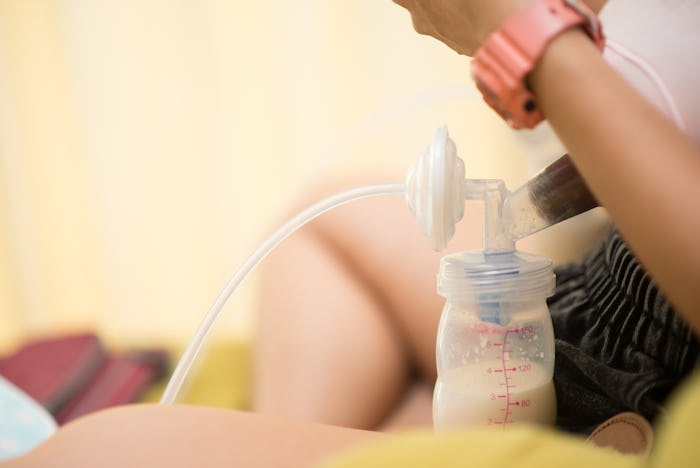Life

How To Safely Pump With Thrush
Aside from the discomfort you and your baby feel when you're suffering from a bout of thrush, you're probably wondering about the safety of your milk. Wondering if you can pump with thrush is a very common concern for moms with the infection and, although it probably won't be comfortable, there are lots of ways to safely feed your baby and continue to pump through a thrush outbreak.
But first, what exactly is a thrush infection? According to the Pump Station, thrush is an irritating yeast infection that can infect nursing moms and their babies. Although yeast is a naturally occurring bacteria in the human body, if it grows unchecked in an ideal environment, it can lead to an infection that can be quite uncomfortable for both mom and baby. It thrives in warm environments like in your baby's mouth, around your nipple, or in your baby's diaper.
According to the Mayo Clinic, if you've had painful nursing sessions, cracked nipples, shooting pains in your breasts, you may have thrush. Similarly, if your baby has been reluctant to nurse or bottle feed, they may be experiencing pain due to a thrush outbreak. Luckily, there are treatment options for thrush and you don't have to completely drop your normal feeding routine because of it.
In fact, according to La Leche League International (LLLI,) the milk you pump during a thrush outbreak can be safely given to your baby within a few hours of pumping. Just be careful not to give your baby milk that was frozen during a thrush outbreak, because freezing the milk doesn't kill the yeast. LLLI also instructed mothers to boil their pump parts after each use, to minimize the likelihood of spreading the infection.
The Pump Station pointed out that pumping may be uncomfortable during a thrush outbreak, but keeping up your supply is important and can even be helpful for easing the infection. Getting medical treatment like an antibiotic for both you and your baby as soon as possible is the only surefire way to stop thrush in its tracks, but the good news is that you can continue to pump as usual until the infection subsides.
This article was originally published on